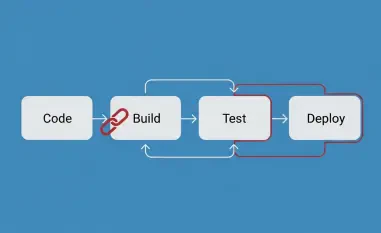The evolving cyber warfare landscape necessitates immediate action to protect critical infrastructure and maintain national security. China’s multidimensional confrontation with the United States has included a heightened focus on cybersecurity. For decades, China has exploited vulnerabilities within US corporate enterprises, forcing technology transfers as part of their broader economic ambitions. Despite significant losses in intellectual property, US companies have remained operational in China, seeing these practices as a trade-off. Alongside economic aggression, cyber threats have now become a cornerstone of China’s strategy, posing an unprecedented risk to US national security. The emerging reality that this provocatively dubbed “cybersecurity Pearl Harbor” scenario can materialize requires analyzing recent advancements in China’s cyber warfare tactics and the potential responses by the US.
Shift in Cyber Offensive
A significant change has occurred in the Chinese Communist Party’s cyber-attacks, posing a more severe threat to US national security. This shift indicates a worst-case scenario aimed at disabling America’s ability to effectively respond to a direct conflict with China. Over the years, cyber espionage and attacks have escalated, focusing not just on stealing data but on crippling essential infrastructure. The new advancements in China’s cyber warfare tactics underline this threat, pushing the United States to reevaluate its defensive and offensive cyber strategies. Two critical initiatives illustrate this change: the Salt Typhoon Initiative and the Volt Typhoon operation. Each presents grave challenges to the security and operational capabilities of America’s critical systems.
The Salt Typhoon Initiative
Known as “Salt Typhoon” by Microsoft, this initiative involves comprehensive data collection on an unprecedented scale. Often referred to as “GhostEmperor,” this operation has allowed China, under the Ministry of State Security, to penetrate major US telecommunications providers. These penetration efforts have dramatically enhanced China’s data-collection capability, arguably nearing the proficiency levels of America’s NSA. The extensive operation encompasses sophisticated tactics designed to gather sensitive information from key players such as Verizon and AT&T. The Ministry of Public Security also contributes significantly to these efforts, highlighting coordinated state-level involvement. In response, institutions such as the FBI advocate for encrypted communications to combat these expansive cyber-espionage practices, urging Americans to adopt more rigorous security measures to safeguard personal and corporate data.
Quantum Cryptography and Defense
To protect against American countermeasures, China has enhanced its defenses through quantum cryptography. This advancement strengthens China’s ability to defend its telecommunications network, minimizing risks of foreign intrusions and creating a formidable barrier against US surveillance efforts. Quantum cryptography, with its potential for near-unbreakable encryption, provides China’s cyber capabilities with a significant edge, particularly in safeguarding communication networks from interception and tampering. This development marks a crucial evolution in cybersecurity, as traditional encryption methods increasingly struggle against advanced decryption techniques. The shift towards quantum cryptography signifies China’s investment in maintaining a defensive posture while simultaneously advancing its offensive operations. This dual approach poses heightened challenges for the US and underscores the need for comparable advancements.
The Volt Typhoon Threat
The “Volt Typhoon” operation, also known as “Vanguard Panda,” involves embedding dormant malware within US critical infrastructure. This malware, undetected until activated, could disrupt telecommunications, electricity grids, and other essential systems during a military conflict, akin to a modern-day Pearl Harbor. This deeply embedded malware poses and remains undetected until China decides to activate it during a strategic conflict, potentially crippling US infrastructure at a crucial moment. Representative Mike Waltz and other officials have emphasized the necessity for the US to implement offensive cyber strategies to impose substantial costs on entities that violate American cyber security protocols. The magnitude of this threat points to a potentially catastrophic impact on national security, making it imperative for the US to develop preemptive and defensive measures to mitigate risks and prepare for worst-case scenarios.
Strategic Implications
The strategic implications of such malware are profound. The activation of these cyber weapons during an Indo-Pacific crisis, particularly one involving Taiwan, could severely impact US military operations. This scenario was recently highlighted when malware was detected within Guam’s water supply control systems, a critical component for US military strategy in the region. The presence of such malware indicates China’s intention to undermine US defenses decisively, potentially facilitating uninterrupted moves against Taiwan or other regional adversaries. This tactic forces American defense planners to reconsider the security of supply chain networks and infrastructure that support US military efforts in the Indo-Pacific. The risks associated with these embedded threats emphasize the need for a robust and coordinated defense strategy, capable of detecting and neutralizing these advanced malware threats before they can be activated.
Collaboration with Allies
In response to these significant threats, the US has communicated the urgency to close allies like the UK and Australia. Recognizing the global nature of China’s cyber warfare capabilities, this call for international vigilance and preemptive action is essential to safeguard against potential intrusions. Collaboration with allies is a critical component of the proposed strategy, as sharing intelligence and defensive measures could enhance collective resilience against cyber threats. Joint efforts in cybersecurity initiatives, combined with coordinated responses to incidents of cyber warfare, present a unified front against Chinese cyber aggression. Allies are encouraged to bolster their own cybersecurity infrastructures, thereby creating a network of fortified systems resistant to penetration and exploitation. This international cooperation aims to create an environment where mutual defense efforts can thwart adversarial tactics effectively.
Building Resilience and Offensive Strategies
To counter these threats, the US must develop resilience in its critical infrastructure and ensure operational integrity during cyber assaults. Strengthening Taiwan’s defense capabilities and adopting a more robust offensive cyber strategy against Chinese infrastructure are essential measures for national security. The article recommends that the US focus on enhancing the security of its critical national infrastructure, including telecommunications, power grids, water supply systems, and transportation networks. This approach would mitigate the impact of any activated cyber intrusions, ensuring continuity and minimizing disruptions. At the same time, adopting offensive measures, such as targeting components critical to China’s national infrastructure and cyber capabilities, could deter future attacks and demonstrate the resolve to protect US interests vigorously.
Conclusion
A significant shift has occurred in the Chinese Communist Party’s cyber-attacks, elevating the threat to US national security. This change indicates a worst-case scenario focused on disabling America’s ability to respond effectively in a direct conflict with China. Historically, cyber espionage and attacks have targeted data theft, but they have now evolved to incapacitate critical infrastructure. These new developments in China’s cyber warfare tactics emphasize this growing threat, compelling the United States to reassess both its defensive and offensive cyber strategies. Two notable initiatives, the Salt Typhoon Initiative and the Volt Typhoon operation, exemplify this evolution. Each presents profound challenges to America’s security and operational capabilities, highlighting the need for enhanced cybersecurity measures. The urgency to safeguard critical systems has never been more pressing, requiring a thorough evaluation of current cyber defenses and the development of robust countermeasures to protect national security.













